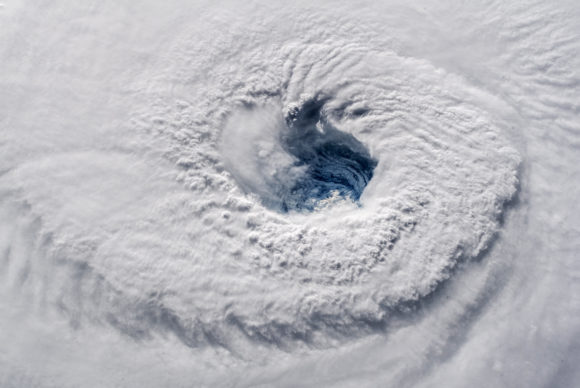A major hurricane that makes landfall in the southeastern United States will may also serve as a COVID-19 super-spreader that will slow recovery and increase costs, catastrophe modeler Property Claims Services said Thursday.
A combination of fast-rising case numbers, low vaccination rates and dense populations make Florida and Louisiana stand out as especially high risks.
“The resurgence of COVID-19 across the United States and low rates of vaccination in parts of the country particularly exposed to tropical storms mean that one major hurricane could turn into a long super-spreader event that could also translate to a slow, uneven, and costly post-event rebuilding process,” the report says.
PCS said a very large catastrophe event — defined as causing more than $5 billion in damages — would likely drive people large numbers of people to shelters and to the homes of friends and families and give the virus more opportunities to transmit. Higher infection rates would disrupt supply chains and create scarcities that drive up costs.
The company, a subsidiary of Verisk, created a “Covicane Risk Score” for 31 states and territories. Florida scored 13,237.25, Louisiana 2,199.06 and Texas 517.81. Alabama, Mississippi, Puerto Rico, New Jersey and Georgia earned three-digit scores, but all other jurisdictions scored lower.
“While Florida’s population density of around 400 people per square mile is below the cohort’s average, it’s seven-day rate of new COVID-19 cases reported is the second highest (behind Louisiana), and its vaccination rate, while average, is low enough to be problematic,” the PCS report says. “Louisiana’s high PCS Covicane Impact Score follows a similar pattern, although the state’s much lower score results from a much lower population density and lower aggregate claims from large events.”
Florida had a transmission rate of 689.5 cases per 100,000 residents in the past week, according to the Centers for Disease Prevention and Control. Louisiana had a rate of 838.8 per 100,000 and Texas 308.7.
A “covicane event” would add misery during a year that has already seen more than its share of natural disasters. Swiss Re, also on Thursday, reported that insured losses from catastrophes reached $40 billion in the first half of 2021, compared to an inflation-adjusted average of $33 billion. It was the second-highest losses for a first half year since 2011, when Japan and New Zealand were rocked by earthquakes, Swiss Re said.
Coincidentally, at the time PCS released its report, the National Hurricane Center was tracking Tropical Depression Fred as it moved northwestward in the Caribbean toward Florida. The storm was downgraded after crossing over the Dominican Republic but was expected to strengthen slightly before making landfall near the Florida Panhandle. Winds were forecast to stay below hurricane strength.
PCS noted that 2021 is the second hurricane season since the COVID pandemic started began. The report said last year insurers dodged a bullet in a sense; Hurricane Laura was the only very large catastrophe and it struck a relatively thinly populated area.
There have been 19 very large storm catastrophes since 1998. In some years there were two and in 2017 there were three, Hurricanes Harvey, Irma and Maria, the report says.
PCS said insurers can prepare for the worst by making sure than their claims adjuster have access to good personal protective equipment. The report said the availability of talent is particularly important. Insurers could face a shortage of healthy adjusters. The chances of that may seem remote, but PCS noted that the marine industry is facing a severe labor shortage now.
“If infection reduces the number of available adjusters, the risk of claim lifecycle elongation increases,” the report says.
The report said rising infection rates could also cut into the finite pool of qualified contractors and repair professionals. An elongated claim lifecycle will increase the potential for higher insured losses.
“Preparation now can increase claimant satisfaction after a major event while also protecting insurer capital,” the report concludes.
The report can be found here.
Was this article valuable?
Here are more articles you may enjoy.


 Viewpoint: Striking Risk-Reward Balance for Shipping Lithium-Ion Batteries
Viewpoint: Striking Risk-Reward Balance for Shipping Lithium-Ion Batteries  CoreLogic Report Probes Evolving Severe Convective Storm Risk Landscape
CoreLogic Report Probes Evolving Severe Convective Storm Risk Landscape  Property Restoration Industry: A Culture in Need of Repair?
Property Restoration Industry: A Culture in Need of Repair?  Oregon Schools Sued for $9M After Young Girl Allegedly Raped
Oregon Schools Sued for $9M After Young Girl Allegedly Raped 